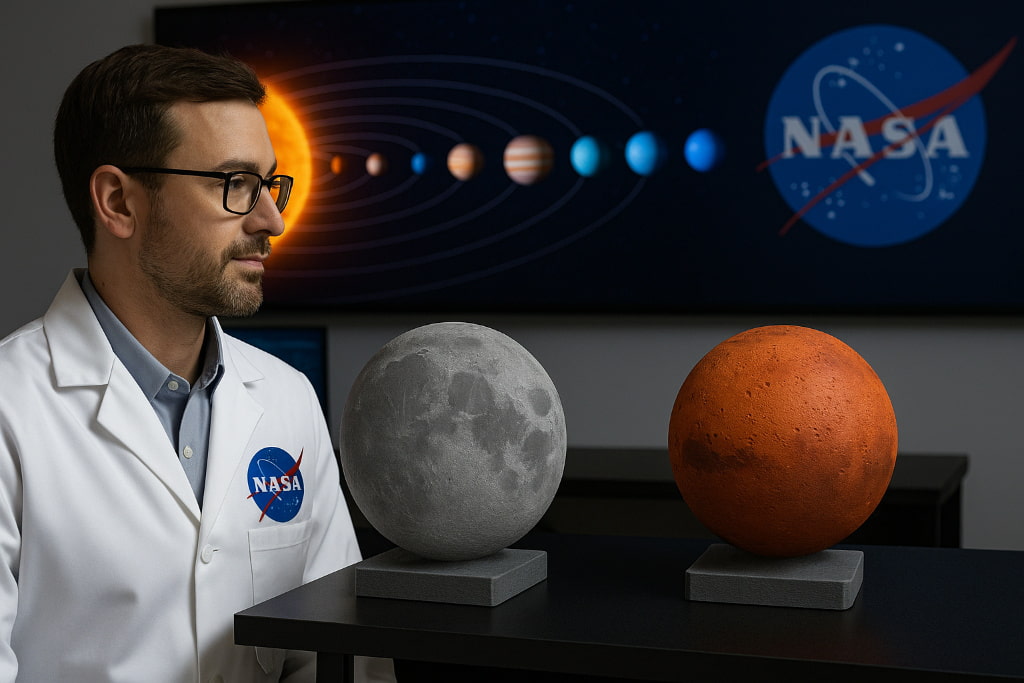
- +91 8055996347
- info@3dreality.in
- Chapru nagar square, CA road, Nagpur, Maharashtra-440008

Imagine this..
You’re standing on the Moon, looking at the Earth glowing in the distance.
Around you, there’s not a bulky space station flown in piece-by-piece from Earth — instead, there’s a strong, futuristic base built right here on the lunar surface using the Moon’s own soil.
Sounds like science fiction? Well, NASA is working to make it science fact — and the secret weapon is 3D printing.
NASA has a bold vision: build sustainable habitats on the Moon and Mars without having to carry every single brick, beam, and bolt from Earth.
Here’s why 3D printing is a game-changer:
Before Mars, NASA is focusing on the Moon as a test ground. Under the Artemis program, they aim to have a permanent human presence there by the end of this decade.
Think of it as Space Lego — except each block is printed right where it’s needed.
Mars is trickier. It’s further away, has thinner air, and experiences extreme temperatures.
But NASA’s plan is similar:
The exciting part? The technology being tested on the Moon will be directly applied to Mars missions. If it works on the Moon, it can work on Mars.
Space construction isn’t easy. Here are the big challenges:
NASA has already been experimenting with 3D printers aboard the International Space Station (ISS).
Astronauts have printed tools, spare parts, and even experimental components in zero gravity.
This means if something breaks millions of kilometers from Earth, astronauts can just print a replacement instead of waiting months for a supply ship.
You might think, Cool, but how does this help me here on Earth?
Well, the same technology could be used for disaster relief housing, affordable homes, and rapid construction right here on our planet.
From remote villages to cities hit by earthquakes, 3D printing can bring fast, cost-effective solutions.
At 3dreality, we’re passionate about pushing the boundaries of 3D printing — from innovative prototypes to custom solutions for your business or projects.
While NASA is aiming for the Moon and Mars, you can harness the same revolutionary technology right here on Earth.
Whether you’re in architecture, product design, engineering, or education, we help bring your ideas to life — layer by layer.
NASA’s dream of building Moon bases and Mars habitats isn’t just a cool space project.
It’s a glimpse into the future of human survival, innovation, and design.
One day, our children or grandchildren might live in a home built not by bricks and cement, but by layers of printed regolith on another planet.
Until then, we can take inspiration from the stars — and start building our own futures with the power of 3D printing.
Ready to explore what 3D printing can do for you? Visit 3dreality.in and let’s start creating.